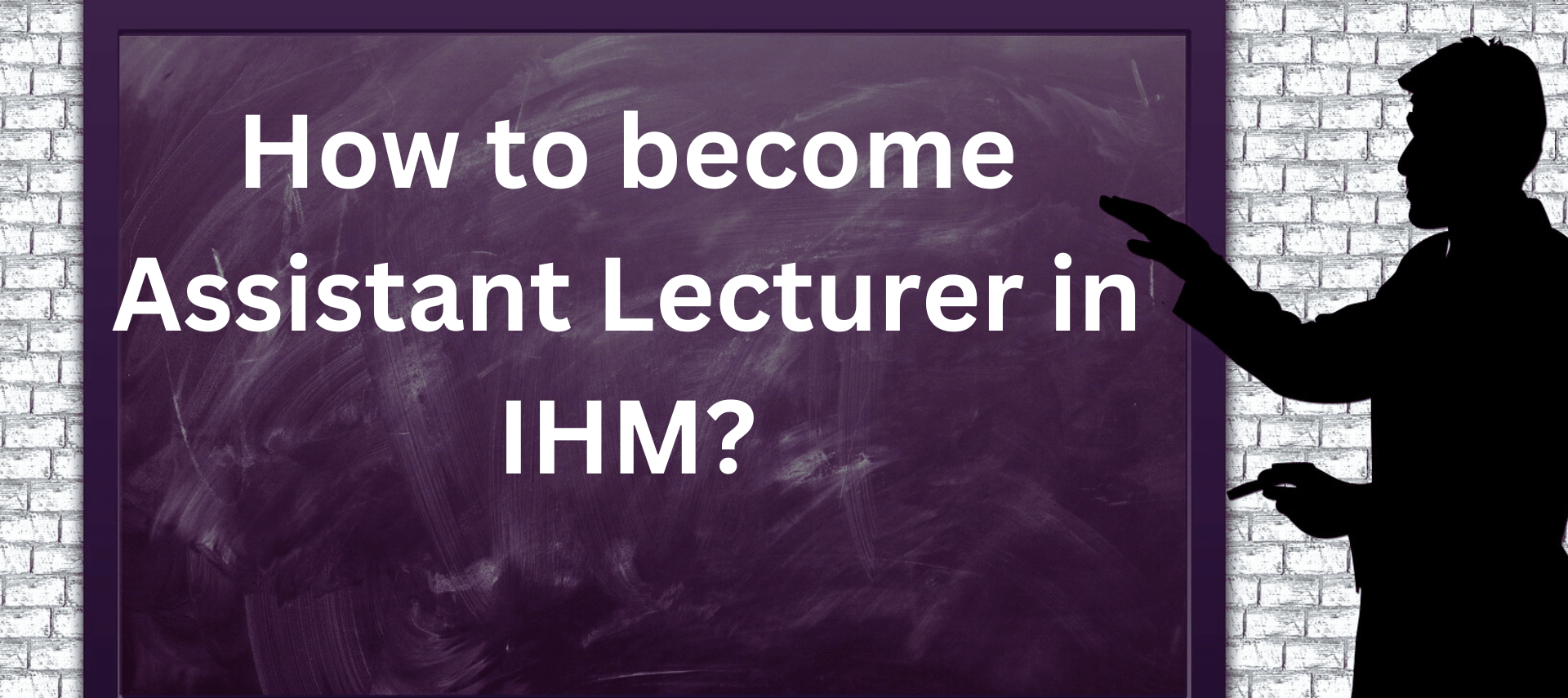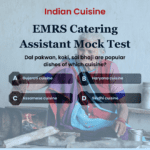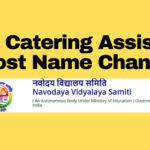This article has three major sections of how to become Assistant Lecturer in IHM’s: 1. Criteria to become Assistant Lecturer, 2. How to prepare for the Skill Test?, and 3. How to prepare for Teaching Skill test?
Are you passionate about hospitality and eager to embark on a fulfilling career in education? The position of Assistant Lecturer in IHMs (Institutes of Hotel Management) opens doors to a rewarding journey. Let’s explore the details of this esteemed role and how you can pave your path towards it.
Overview of IHM Assistant Lecturer Post
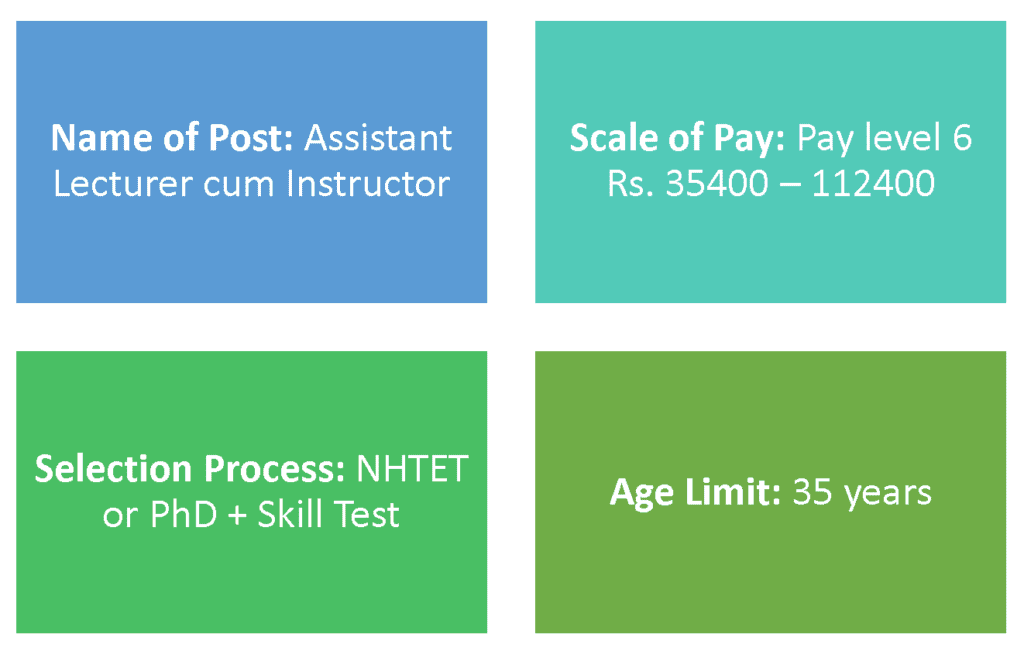
- Name of the Post: Assistant Lecturer
- Scale of Pay and Classification: Pay Level 6 (As per 7th CPC), Rs. 35400 – 112400. State Institutes may offer different scales of pay from the State Government at an equivalent or higher level. In the case of tenure-based contractual appointments, they will offer a consolidated pay of Rs. 35,000 p.m. with applicable allowances, if any.
- Method of Recruitment: Direct Recruitment
- Age Limit for Direct Recruits: For the General Category, the age limit is not to exceed 35 years on the date of vacancy for Central IHMs. Age relaxation will apply for other categories as per government norms. Different age criteria may apply for State Govt. IHMs, PSU-run IHMs, and Private IHMs.
- Selection/Non-Selection Post: Not Applicable
Essential & Desirable Educational Qualifications
The table outlines the educational qualifications required for two categories, Category A and Category B, for the position of Assistant Lecturer in IHMs (Institutes of Hotel Management).
Category A necessitates a postgraduate degree in Hospitality/Tourism or MBA, along with relevant experience and NHTET qualification.
Category B requires a bachelor’s degree in Hospitality/Hotel Administration, industry experience, and NHTET qualification.
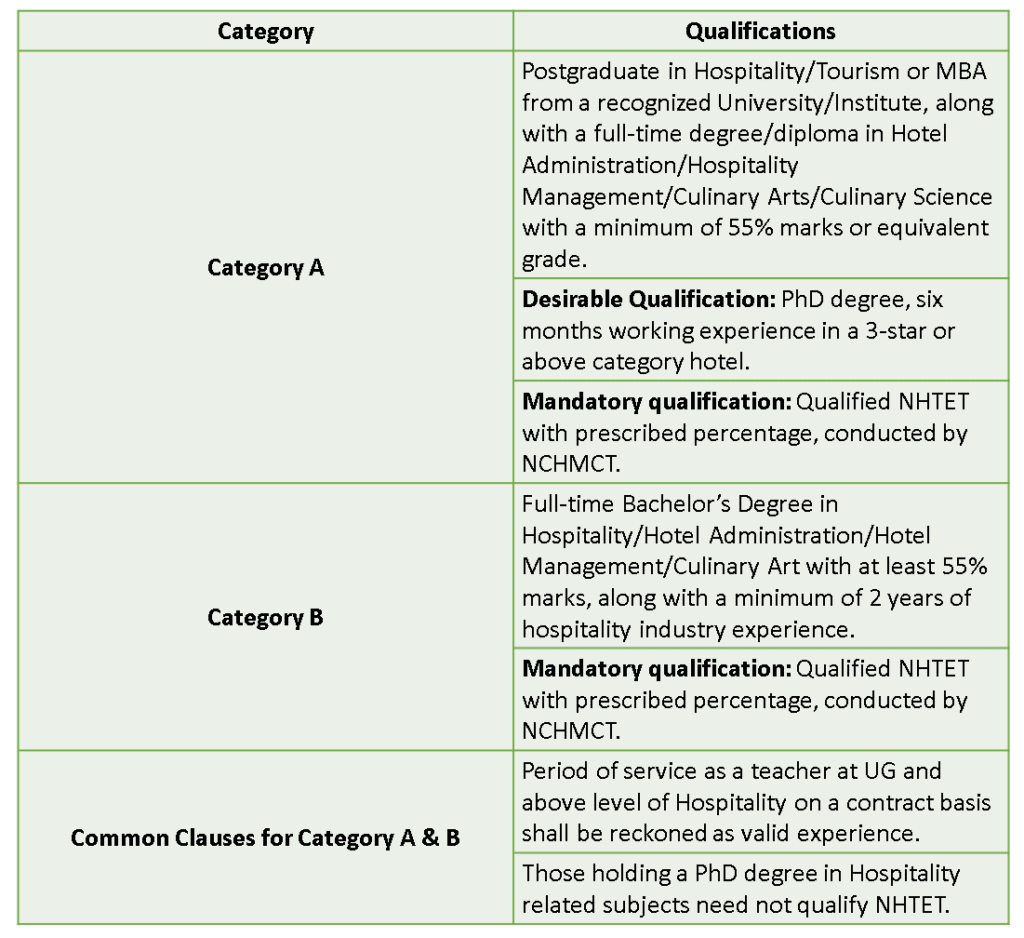
Selection Process
Prescribed Process of final selection against the vacancy of Assistant Lecturer and Teaching Associates in NCHMCT affiliated IHMs, after NHTET or Ph.D. in Hospitality topic.
1. Selection Process Overview
Govt. of India has stopped Interview in the selection against Group B and C posts. As such, the selection of Teaching Associates and Assistant Lecturer should be in the following manner.
2. Minimum Qualification Requirements
Minimum requirement of both the posts are either NHTET qualified or having Ph.D on a Hospitality Topic. There will be an weightage of NHTET score for them who are qualified the exam. But those having Ph.D in hospitality will have different calculation. The details are as under.
3. Institute-Level Selection Process
The final selection will be made at the Institute Level through Skill tests for both i.e. NHTET qualified and Ph.D. degree holders. Skill will be of 50 marks and weightage for NHTET or Ph.D. up to 50 marks.
4. Practical Skill Test
Practical Skill test (to be taken for all the four core area of Hospitality. Each practical is for 7 to 8 marks and the total marks for Practical skill is 30)
5. Importance of Pass Marks in Skill Tests
Candidates must score pass marks separately in Practical Skill and Teaching Skill. Therefore, merely qualifying the NHTET with a prescribed percentage or having a Ph.D. degree will not confer any right to a candidate to be selected without obtaining pass marks in the Skill tests.
Pass marks prescribed in the skill test for all categories is as under:
| Particular | Practical Skill Test (Aggregate of Four core area of Hospitality) | Teaching Skill Test |
| Full Marks | 30 | 20 |
| Pass Marks for Assistant Lecturer | 15 | 10 |
| Pass Marks for Teaching Associate | 12 | 8 |
Assessment Procedure
Assessment of Skill Test will be done by the members of Selection Committee as prescribed in the Recruitment Rules. If the Selection Committee feels to adopt subject expert during Assessment, they may do so, with the approval of Chairman of the Selection Committee.
Parameters for Skill Test Assessment
Assessment of the Skill tests should be done on the basis of prescribed parameters and the marks allotted in each parameter, as per para 13.11 and 13.12 bellow.
Separate Assessment Sheets
Institute should make separate assessment sheet for each of the candidate for Practical Skill and Teaching Skill test. Each Assessment sheet should be signed by the Assessor in the space provided in the prescribed Assessment form.
Calculation of NHTET and Ph.D. Weightage
Weightage of NHTET score should be calculated in the prescribed form as at para 13 bellow and the weightage of Ph.D. should be calculated on the basis of score in the Skill test in the prescribed form as at Para 13.14 bellow.
Final Tabulation and Weightage Calculation
Those who secured the prescribed pass marks in both Skill Tests, will be brought forwarded to the final tabulation sheet along with the weightage of NHTET and Ph.D. in the prescribed form as prescribed in para 13.15 bellow.
Assessment of Practical Skill
(Assessor means the selection committee members and other subject experts, if co-opted by the selection committee with the approval of the Chairman)
Teaching Aptitude Test
Teaching Aptitude Test for 18 marks Classroom teaching (Assessment is more on the technique and not less on the topic)
NHTET Score Weightage Calculation
Calculation of weightage of NHTET Score (for the candidates not having Ph.D in Hospitality Topic and became eligible on the basis NHTET conducted by NCHM.
Ph.D. Eligibility and Merit List Calculation
Those became eligible on the basis of Ph.D in hospitality topic, will not have weightage of NHTET and in those case to make a combined merit list with the NHTET qualified, a weightage of 95% of their aggregate number obtained in Skill test will be added in the final score sheet.
| Particular | Marks obtained in Practical Skill test | Marks obtained in Teaching Skill Test | Aggregate Score obtained in Skill Test | Factor | Weightage admissible (to be rounded off up to two decimal) |
| Ph.D. in Hospitality Topic | 95% |
Final Score Sheet to make the merit List for selection
| Sl No | Name | Roll No/ Application No | Marks of Skill Test | Whether NHTET or Ph.D. in Hospitality | Weigh-tage of NHTET or Ph.D. | Final Score | |
| Marks obtained in Practical Skill | Marks obtained in Teaching Skill | ||||||
| 1 | 2 | 3 | 4 | 5 | 6 | 7 | 8 (4+5+7) |
How to Prepare for Practical Skill Test?
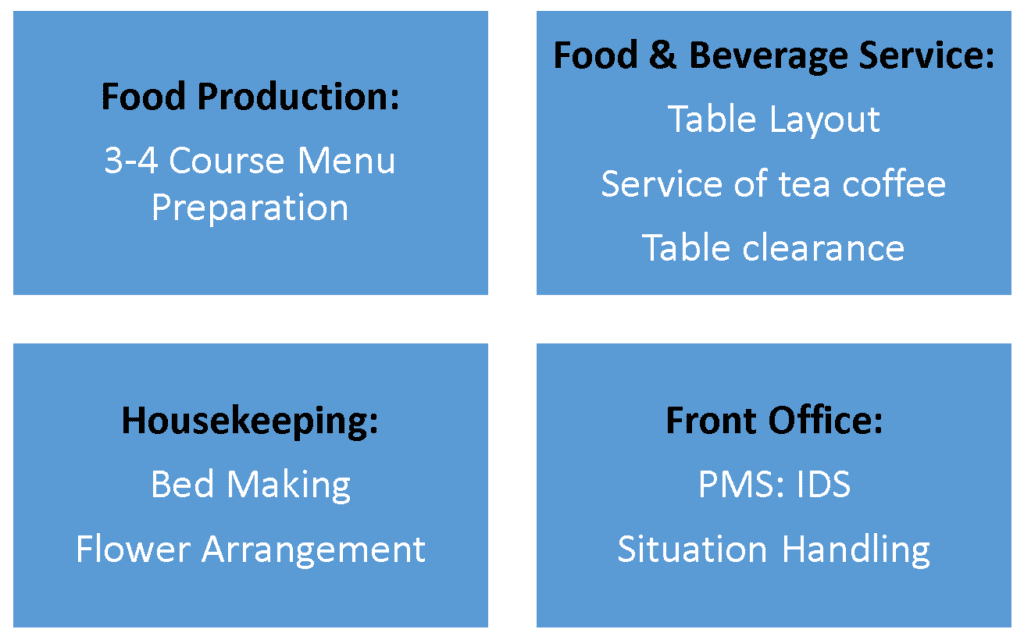
Aspiring Assistant Lecturers in the field of Hospitality undergo rigorous practical skill tests to ensure they acquire hands-on expertise essential for effective teaching and management. Candidates demonstrate their abilities in all four different departments during the practical skill test.
You will be given topics randomly by picking a chit from a jar filled with many chits, each containing a topic related to that department. So, it’s like a surprise which topic they’ll get to demonstrate their skills on.
“The candidate might have to make their own menu using ingredients given from a basket. Or they could pick a topic chit from a jar for the food production test.”
Let’s delve into the various components of this test from various departments:
1. Food Production
Candidates showcase their culinary prowess by preparing a diverse range of dishes, focusing on menu planning, course preparation, and presentation. From baking bread to crafting intricate main courses and desserts like Crème Caramel, attention to detail and hygiene are paramount.
Following things must be kept in mind for Food Production practical:
Menu Planning
If the Candidates decide what dishes they will cook. They need to think about what will go well together and plan accordingly. Choose very simple cooking methods which takes less time to cook using the available ingredients.
Course Preparation
Candidates are required to plan and prepare a meal consisting of three to four courses. This typically includes appetizers, a main course, and dessert, with optional additions like soups or salads. The emphasis is on creating dishes commonly found in Continental cuisine, which includes European dishes like pasta, grilled meats, and salads.
Presentation
After cooking, they arrange the food on plates or platters in an attractive way. This makes the food look appealing and inviting to eat. Remember following points for plating the food:
a) Arrangement
Place each food item neatly on the plate, making sure there is space between them. Avoid overcrowding the plate.
b) Colors
Use a variety of colorful ingredients to make the dish visually appealing. Different colors can make the food look more appetizing.
c) Garnish
Add a garnish, like fresh herbs or a sprinkle of spices, to enhance the appearance of the dish. It adds a finishing touch and makes the plate look more attractive.
d) Balance
Ensure there is a balance of flavors and textures on the plate. Combine different elements such as proteins, vegetables, and starches to create a well-rounded meal.
Bread Baking
If you’re tasked with making bread, opt for a straightforward bread roll. Just keep in mind, baking can be challenging in a new place. Choose bread rolls like
- Plain Dinner Rolls: These classic bread rolls are soft and versatile, perfect for serving with meals or as sandwich buns.
- Herb Rolls: Add dried herbs like rosemary, thyme, or oregano to the dough for an extra flavor boost.
- Garlic Rolls: Incorporate minced garlic or garlic powder into the dough for a savory twist. You can also brush the rolls with garlic butter after baking for even more flavor.
- Cheese Rolls: Mix grated cheese, such as cheddar or Parmesan, into the dough for cheesy, savory rolls.
- Whole Wheat Rolls: Use a combination of whole wheat and all-purpose flour for a healthier option with a nutty flavor.
- Honey Rolls: Add a touch of sweetness by incorporating honey into the dough. These rolls pair well with both savory and sweet toppings.
- Cinnamon Rolls: For a treat, make cinnamon rolls with a swirl of cinnamon sugar filling and topped with cream cheese icing.
Main Courses
This includes making the main dishes of a meal. Candidates must cook them perfectly, ensuring they taste delicious and are cooked through.
Coq au Vin
A classic French dish featuring chicken braised in red wine with mushrooms, onions, bacon, and herbs. It’s rich, flavorful, and perfect for a cozy dinner.
“Poulet sauté chasseur,” or Hunter’s Chicken
It is a classic French dish that features sautéed chicken served with a rich mushroom and tomato sauce. The term “chasseur” translates to “hunter” in French, indicating the rustic, earthy flavors of the dish. It typically includes ingredients like chicken pieces, mushrooms, onions, tomatoes, white wine, and herbs such as thyme and parsley. The chicken is first browned in a skillet, then simmered in the flavorful sauce until tender. Poulet sauté chasseur is often served with potatoes, rice, or crusty bread to soak up the delicious sauce.
Desserts
They may have to make desserts like Crème Caramel, which require skill and precision. Getting the right texture and flavor is important.
Chocolate mousse
It is a decadent dessert made with melted chocolate, whipped cream, and sometimes egg whites. The melted chocolate is combined with whipped cream to create a light and airy texture. It’s chilled until set and then served in individual cups or bowls.
Crème caramel
Crème caramel is a classic French dessert consisting of smooth, creamy custard topped with a layer of soft caramel. It’s baked until set, then chilled and inverted before serving, resulting in a delightful combination of sweet caramel and silky custard.
Attention to Detail
Every step of cooking needs to be done carefully. Candidates must pay close attention to measurements, cooking times, and techniques.
Hygiene
Keeping everything clean is crucial. Candidates must wash their hands, use clean utensils, and keep their cooking area tidy to avoid contamination.
2. Food & Beverage Service
This segment evaluates candidates’ proficiency in table setup and service etiquette. Candidates demonstrate their ability to set tables according to given instructions, handle crockery and cutlery appropriately, and execute various service tasks such as tea and coffee service with finesse.
There may be few major tasks asked in Food Production practical, which are as follows:
Table Setup
Based on the chit you have picked, either a dish or a menu may be provided to the server for reference during table setup.
Here’s a detailed explanation of the table setup for both a single dish and a 3-4 course menu, including basic table setup for classical dishes like pasta, fish, and salad, along with the basics of table setup in a professional restaurant:
Single Dish Table Setup:
- Chit System: The server picks up a chit specifying a single dish to be served at the table.
- Table Preparation: The server prepares the table by ensuring that the necessary tableware, including a main plate and appropriate utensils, such as a fork and knife, are placed in their designated positions.
- Additional Items: Depending on the dish, additional items like a soup spoon, bread plate, or condiment dish may be added to the table setup.
- Beverage Service: If beverages are included with the dish, appropriate glassware, such as a water glass or wine glass, may also be placed on the table.
3-4 Course Menu Table Setup:
- Chit System: If the chit specifies a 3-4 course menu, the server prepares the table accordingly.
- Basic Table Setup: The table is set with a complete array of tableware for each course of the meal, starting with the main plate and utensils for the first course, and progressing to additional plates and utensils for subsequent courses.
- Course-wise Arrangement: Each course of the menu is presented in a structured manner, with appropriate tableware arranged in sequential order to accommodate the progression of the meal.
- Beverage Pairing: Glassware for different beverages, such as water, wine, or other drinks, may be set out to accompany each course as per the menu.
Classical Dish Table Setup:
Pasta: For a pasta dish, the table setup includes a pasta bowl or plate, along with a fork and possibly a spoon for twirling the pasta. A small dish for grated cheese or red pepper flakes may also be provided.
Fish: When serving fish, a dinner plate and fish knife and fork are typically set out. Lemon wedges, tartar sauce, or other accompaniments may be placed on the table as well.
Salad: For a salad, a salad plate and fork are arranged, along with any additional utensils for serving dressings or toppings. Bread and butter may also be provided alongside the salad.
Crockery and Cutlery: The necessary crockery (plates, bowls) and cutlery (forks, knives, spoons) will be arranged on a side table. The server will use a salver (a tray with a handle) to carry and arrange them on the dining table according to the specific requirements of the dish being served.
Basics of Table Setup in a Professional Restaurant:
Cleanliness: Tables should be clean and well-maintained, with fresh linens or placemats if used.
Organization: Tableware should be neatly arranged and properly spaced, with each item positioned according to its function and course of the meal.
Attention to Detail: Attention should be paid to small details such as ensuring flatware is polished, glasses are spotless, and napkins are folded neatly.
Guest Comfort: The setup should be designed to enhance guest comfort and convenience, with everything they need readily accessible throughout the meal.
3. Accommodation Operation
Candidates demonstrate their skills in hotel room operations, including bed-making techniques, turn-down service, and creative flower arrangement. With scenarios ranging from traditional to situational setups like corner tables or conference halls, candidates showcase their versatility in enhancing guest experiences.
Bed-Making Techniques
Traditional vs. Modern
- Traditional bed-making involves the meticulous arrangement of sheets, blankets, and pillows following specific folding and tucking methods.
- Modern bed-making may include the use of fitted sheets and duvet covers for a sleeker, more contemporary look.
Different Types of Folds:
Bed linens may be folded in various ways to add a decorative touch to the bed. Common folds include hospital corners, envelope folds, or decorative folds at the foot of the bed.
Turn-Down Service
- Preparation:
- Turn-down service typically occurs in the evening before guests retire for the night.
- Staff should ensure they have clean linens, chocolates or mints, and any additional amenities required for the turn-down service.
- Pillow Fluffing:
- Pillows should be plumped and arranged neatly, with any decorative pillowcases or shams positioned to enhance the bed’s appearance.
- Sheet Folding:
- The top sheet or duvet should be neatly folded back to reveal the linens beneath, creating an inviting space for the guest to settle in.
- Amenities Placement:
- Chocolates or mints may be placed on the pillows as a gesture of hospitality.
- Other amenities, such as bottled water, slippers, or a turndown card with a bedtime quote or weather forecast, may also be provided.
Flower Arrangement Techniques
Types of Flower Arrangements:
- Flower arrangements can range from traditional to contemporary styles, including:
- Round arrangements, where flowers are arranged symmetrically in a circular shape.
- Linear arrangements, where flowers are placed in a straight line or row.
- Cascading arrangements, where flowers spill over the edges of a container for a dramatic effect.
Selection of Flowers:
- Choose fresh flowers with vibrant colors and pleasing fragrances that complement the room’s decor and ambiance.
- Consider the seasonality of flowers and select varieties that are readily available and in peak condition.
Preparation of Flowers:
- Remove any foliage or thorns from the stems and trim them at an angle to ensure they can absorb water effectively.
- Place the flowers in clean water with floral preservative to prolong their freshness and vitality.
Arrangement Techniques:
- Start with a focal point, such as a large or brightly colored flower, and build the arrangement around it.
- Use a mix of flower heights, textures, and colors to create visual interest and balance.
- Fill in any gaps with foliage or filler flowers to add volume and depth to the arrangement.
Vase Selection and Preparation:
- Choose a suitable container or vase that complements the size and style of the arrangement.
- Clean the vase thoroughly and fill it with fresh water before arranging the flowers to ensure they stay hydrated.
4. Front Office
In this section, candidates actively engage in front desk operations, performing tasks such as guest registration, posting, cashiering, and report generation using Property Management Systems (PMS) like IDS. Moreover, candidates demonstrate their proficiency in addressing common guest-related challenges such as luggage loss, overbooking, and noisy guest rooms, highlighting their problem-solving and customer service skills.
PMS (Property Management System): IDS
Introduction to PMS
- PMS, or Property Management System, is a software application used in hotels and other hospitality establishments to manage various operational tasks, including reservations, guest check-in and check-out, room assignments, billing, and more.
- IDS, or Integrated Distribution System, is a component of the PMS that facilitates the distribution of hotel inventory across multiple online booking channels.
Task Performance
- Registration: The candidate is required to demonstrate proficiency in the guest registration process, which involves collecting guest information, verifying identification, and assigning a room.
- Posting: Posting refers to the process of recording charges incurred by guests during their stay, such as room charges, additional services, and incidentals, onto their folio.
- Cashiering: Cashiering involves handling cash transactions, processing payments, and providing guests with receipts for services rendered.
- Download Report: Candidates may be tasked with generating and downloading various reports from the PMS, such as occupancy reports, revenue reports, or guest satisfaction surveys.
Situation Handling
Luggage Loss: The candidate must demonstrate effective communication skills and empathy while assisting the guest in locating their missing belongings in the event of luggage loss. This may involve coordinating with housekeeping, security, or transportation services to resolve the issue promptly and satisfactorily.
Overbooking: The candidate should remain calm and composed while offering alternative accommodations or compensation options to affected guests when faced with an overbooking situation. This requires problem-solving skills and the ability to balance guest satisfaction with operational constraints.
Noisy Guest Room: The candidate must promptly and tactfully address the guest’s concerns when handling a noisy guest room. This may involve investigating the source of the noise, offering to relocate the guest to a quieter room if available, or taking steps to mitigate the noise disturbance, such as contacting maintenance or implementing noise-reducing measures.
By excelling in these practical skill areas, aspiring Assistant Lecturers not only demonstrate their proficiency in hospitality operations but also showcase their potential to impart valuable knowledge and mentor future industry professionals effectively.
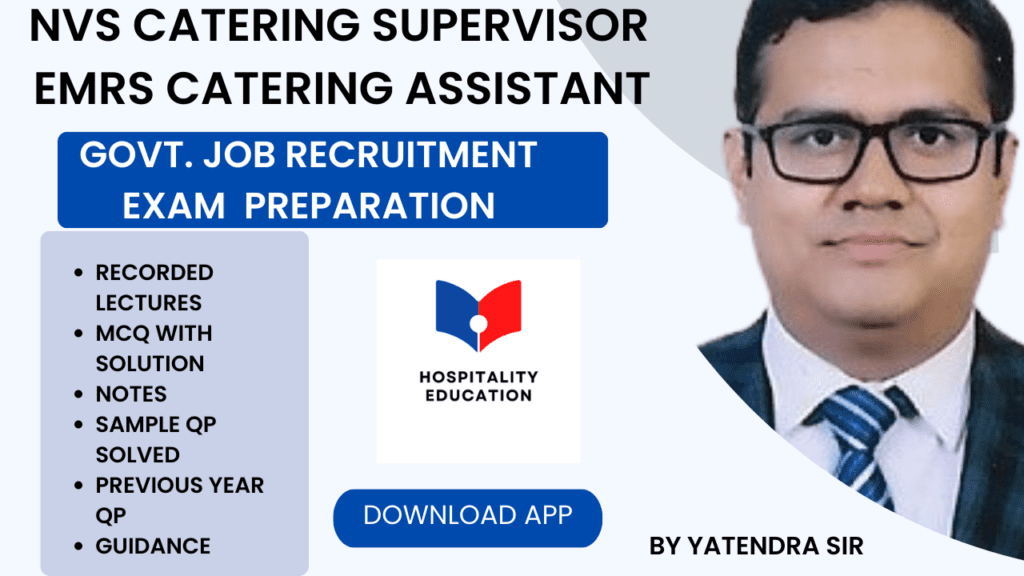
Use the App Hospitality Education for Preparation of NVS Catering Supervi
Teaching Skill Test
The Teaching Skill Test for Assistant Lecturer at IHM involves several key components to evaluate the candidate’s teaching abilities:
Time Frame
Candidates are allotted 10 minutes to conduct a teaching session in a classroom setting. Topics for teaching are selected via a chit system, ensuring randomness and diversity.
Engaging Teaching Methodology
Candidates are expected to engage students effectively by building attention and creating interest right from the beginning. This includes providing an overview of the topic, delivering the main content within 5 minutes, and concluding with a brief revision.
Interactive Approach
Candidates should encourage student participation by asking questions throughout the session. This not only helps assess student understanding but also enhances the learning experience.
Confidence and Adaptability
Despite the randomness of topic selection, candidates are encouraged to remain confident in their delivery, even if they are not familiar with the chosen topic. Additionally, candidates have the option to request a change of chit if necessary.
Overall, the Teaching Skill Test aims to evaluate the candidate’s ability to deliver effective and engaging classroom instruction, assess student learning, and adapt to varying teaching scenarios.

Click Here for Free Online Test
Join WhatsApp Group: Catering Supervisor/ Assistant Exam

